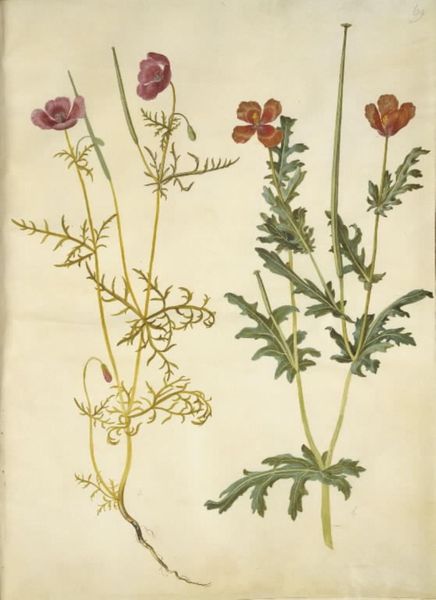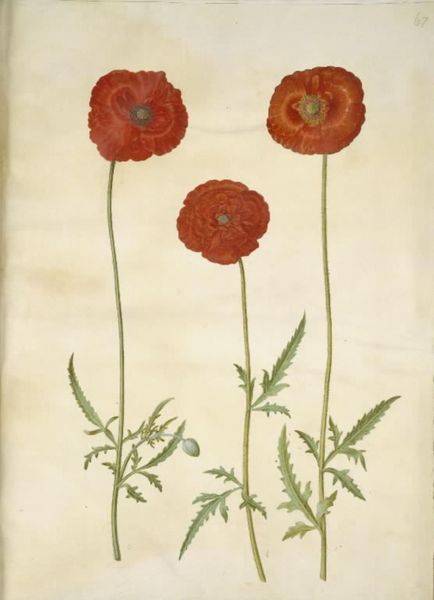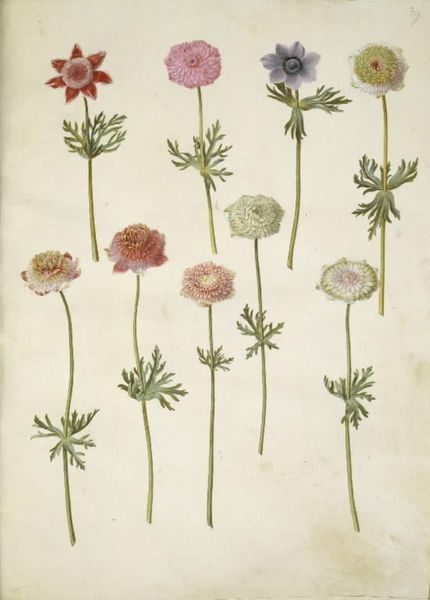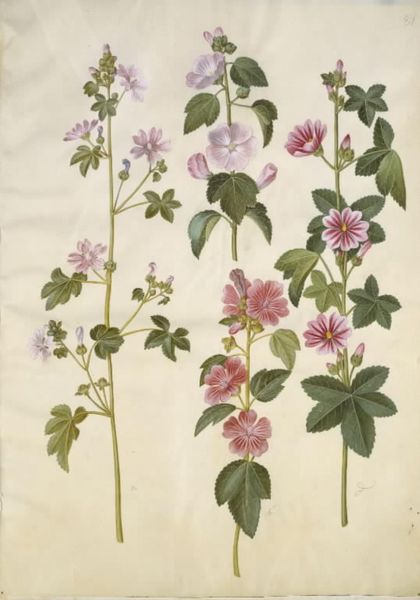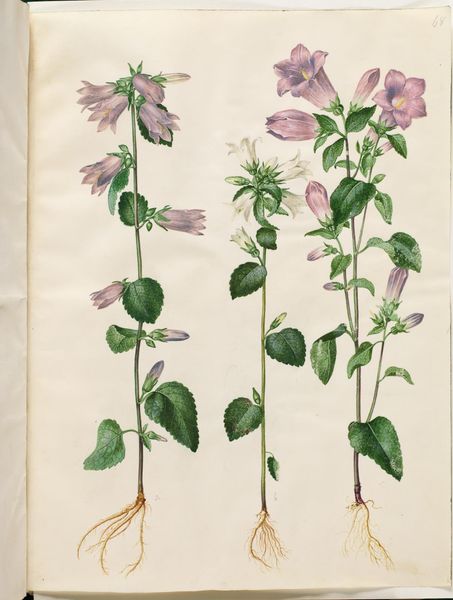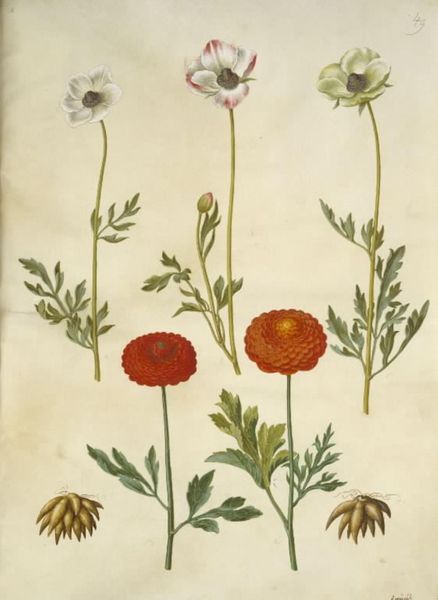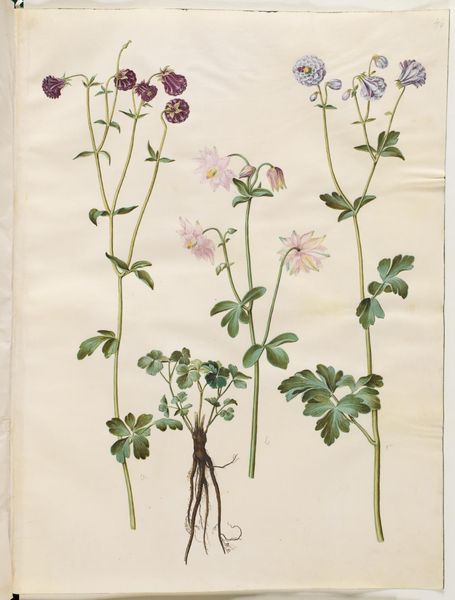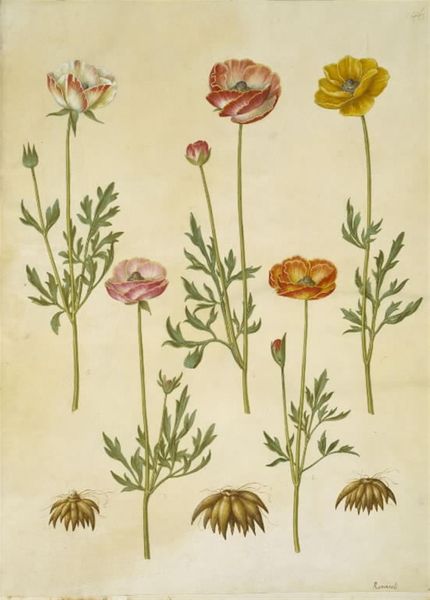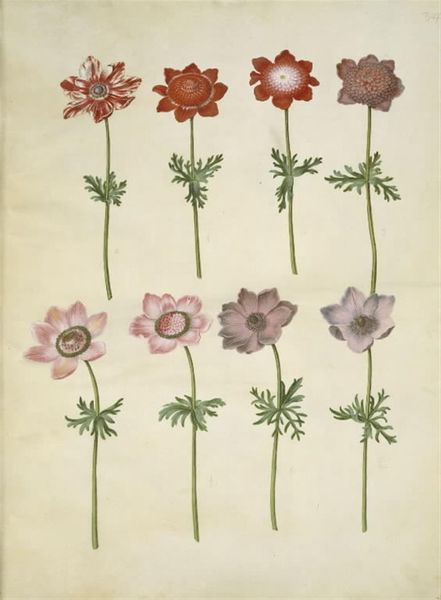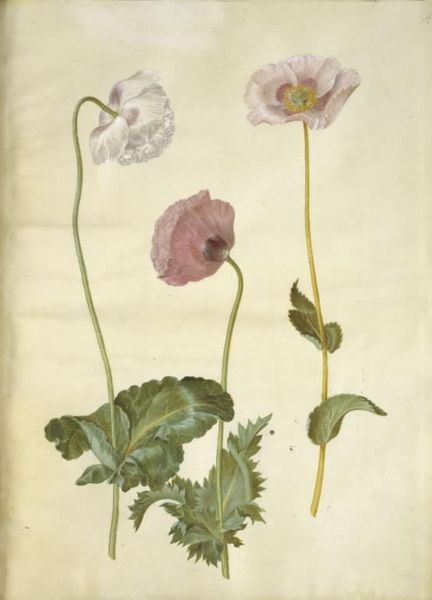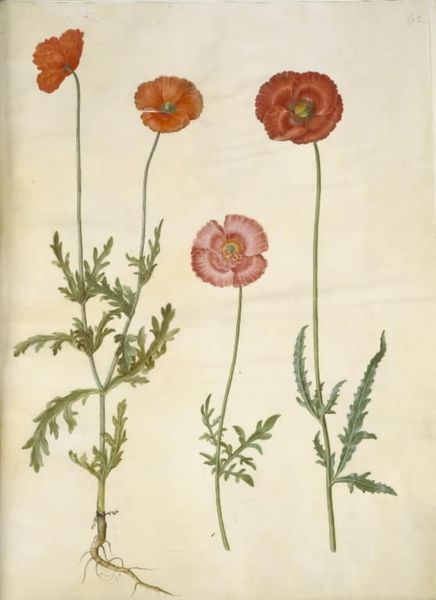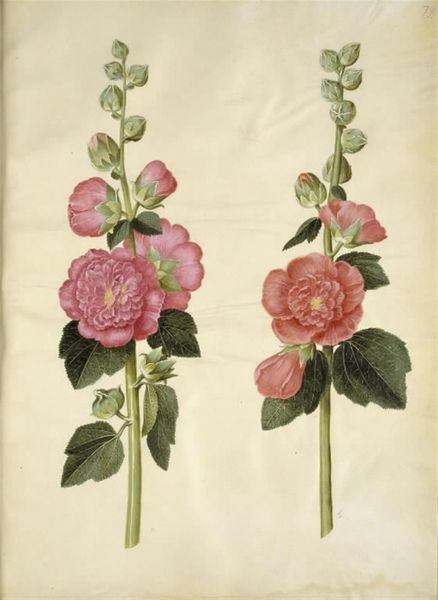
drawing, gouache, watercolor
#
drawing
#
dutch-golden-age
#
gouache
#
watercolor
#
watercolor
#
realism
Dimensions: 505 mm (height) x 385 mm (width) (bladmaal)
Curator: Let’s turn our attention to this elegant botanical study, Papaver somniferum (opium-valmue), a watercolor and gouache drawing made between 1649 and 1659, attributed to Hans Simon Holtzbecker. Editor: Immediately striking is the stark juxtaposition. One poppy rendered in pure, almost ethereal white, set against its counterpart in deep, brooding purple. It feels almost like a study in duality. Curator: Indeed, Holtzbecker's meticulous realism invites such contemplation. Notice the precision in rendering the botanical details—the delicate, crenulated edges of the leaves, the almost mathematically perfect geometry of the flower heads. It adheres to the artistic conventions of the Dutch Golden Age, striving for faithful representation. Editor: Yet, the choice of the opium poppy itself opens a space for social commentary, doesn't it? During this period, botanical illustrations were not merely scientific records. The Opium Wars and the commodification of substances like opium… it becomes impossible not to view this botanical study through a contemporary lens. Curator: But, we risk anachronism, don’t you think? Shouldn’t we prioritize formal analysis, exploring the artwork’s intrinsic qualities independent of later socio-political contexts? For instance, examine the subtle use of line, how it directs the gaze upward, emphasizing the bloom, then draws the eye down to trace the delicate stem? Editor: While the aesthetic dimensions are important, neglecting the symbolic weight of opium itself feels negligent. I’d contend it demands acknowledgement; Holtzbecker wasn’t simply capturing botanical beauty. He was implicitly engaging with broader issues around commerce and exploitation. Even in rendering nature, it feels to be charged with ideological potency. Curator: Perhaps, but consider the interplay of light and shadow, which creates depth, emphasizing the velvety texture of each petal. Are you really convinced this has anything to do with that? Surely there is some element of artistic intention we must consider outside contemporary social narratives? Editor: Art doesn't exist in a vacuum. It's so deeply embedded within larger ideological structures that even choices, like highlighting specific subjects, reflects cultural currents, in fact I’d argue it necessitates an examination into those contexts. I'd like to imagine that these botanical works offer crucial portals into dialogues across time. Curator: And for me, Holtzbecker’s study stands as an elegant reminder of beauty rendered with a scientist’s exacting eye, a botanical document offering quiet satisfaction. Editor: And for me, it underscores the interconnectedness of everything—beauty, power, and, sometimes, destruction, forever entwined within a single frame.
Comments
No comments
Be the first to comment and join the conversation on the ultimate creative platform.
